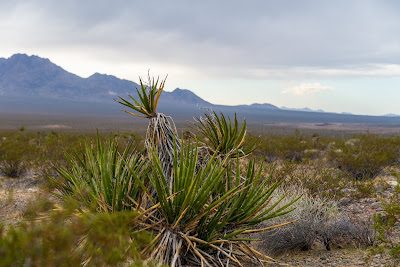Ivanpah Bird Mortality Report Released; Data on Separate Project Kept Secret
Biologists estimate that as many as 1,314 birds died at the Ivanpah Solar Electric Generating System (ISEGS) - a solar power tower project that also burns natural gas - from 25 May to 17 August 2015 based on partial searches of the sprawling facility. Many of the birds died from collision with giant mirrors or after flying through zones of intense heat above the project. The deaths last summer are in addition to thousands of others caused by the project since it was constructed.
During last summer at least two birds - a peregrine falcon and common raven - were severely burned by the project but still managed to fly close to the project's outer edge before dying, again suggesting that the study may underestimate the number of birds burned in the air space above the field of mirrors. The peregrine falcon was found in July and euthanized in September; the raven was found already dead.
According to a previous monitoring report, two other birds with burned feathers were found incidentally - not during organized surveys - outside the main project area. All of these incidents are reasons that the mortality surveys should also cover the desert habitat beyond the fence line of the project since severely burned birds can fly a good distance before dropping to the ground. This is not only important to get a more accurate sense of how many birds are dying, but also to identify the impacts of the project on all species, including those capable of flying beyond the current survey area with severe injuries.
Ivanpah Data Undermines Solar Reserve Claims
The California Energy Commission required that the Ivanpah Solar project developer (Brightsource Energy) study and monitor bird mortality at Ivanpah and make the results public. This stands in contrast with the lack of data made available at the Crescent Dunes Solar project developed by Solar Reserve in Nevada. Solar Reserve hastily attempted to portray the project as bird friendly after a leaked video showed the project burning as many as 130 birds during an initial test in January 2015. The company then inaccurately claimed that simply focusing the mirrors away from the tower stops bird deaths. Unfortunately, this is a misleading public relations move by Solar Reserve because the mirrors must be focused on the tower in order for the project to operate. Also, birds can die at power tower projects from collisions with the mirrors or exposure to elevated heat above the mirror field.
Outside of the leaked video, little is known about the extent of ongoing bird mortality at the project, or what the Department of Interior (the project is built on public lands) is doing to monitor or mitigate the bird deaths. Now, desert conservation group Basin & Range Watch has filed a legal challenge to compel the release of bird mortality data at the project. The ongoing study of bird mortality at Ivanpah suggests there are no simple fixes, so Solar Reserve's Crescent Dunes project almost certainly continues to cause bird deaths. Because these projects are built on public lands and have impacts on wildlife, it is important for us to study and understand the environmental impacts so we can make wiser choices as we develop and deploy renewable energy. Keeping data in the dark only helps corporations, not the public.
During last summer at least two birds - a peregrine falcon and common raven - were severely burned by the project but still managed to fly close to the project's outer edge before dying, again suggesting that the study may underestimate the number of birds burned in the air space above the field of mirrors. The peregrine falcon was found in July and euthanized in September; the raven was found already dead.
 |
| Ivanpah Solar project, mirrors (foreground) and tower. |
According to a previous monitoring report, two other birds with burned feathers were found incidentally - not during organized surveys - outside the main project area. All of these incidents are reasons that the mortality surveys should also cover the desert habitat beyond the fence line of the project since severely burned birds can fly a good distance before dropping to the ground. This is not only important to get a more accurate sense of how many birds are dying, but also to identify the impacts of the project on all species, including those capable of flying beyond the current survey area with severe injuries.
Ivanpah Data Undermines Solar Reserve Claims
The California Energy Commission required that the Ivanpah Solar project developer (Brightsource Energy) study and monitor bird mortality at Ivanpah and make the results public. This stands in contrast with the lack of data made available at the Crescent Dunes Solar project developed by Solar Reserve in Nevada. Solar Reserve hastily attempted to portray the project as bird friendly after a leaked video showed the project burning as many as 130 birds during an initial test in January 2015. The company then inaccurately claimed that simply focusing the mirrors away from the tower stops bird deaths. Unfortunately, this is a misleading public relations move by Solar Reserve because the mirrors must be focused on the tower in order for the project to operate. Also, birds can die at power tower projects from collisions with the mirrors or exposure to elevated heat above the mirror field.
 |
| The Crescent Dunes Solar project built by Solar Reserve in Nevada. The company has issued misleading statements regarding the project's impact on birds, and ongoing monitoring of another solar power tower project - the Ivanpah Solar project in California - suggests there are no simple fixes that can prevent bird mortality at these projects. Photo by Basin & Range Watch. |



Comments
Post a Comment